Showing 51–60 of 121 results
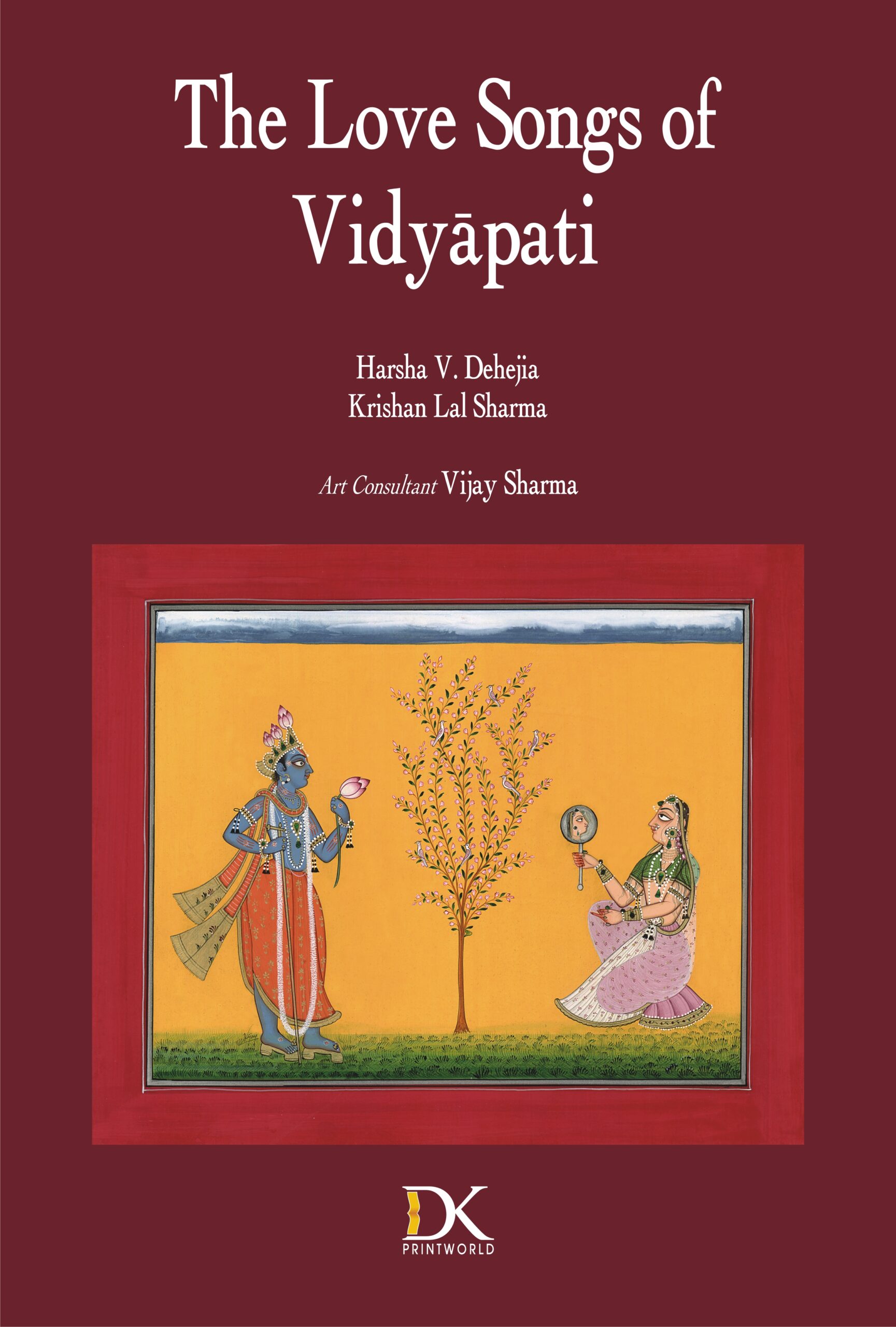
This portfolio, based on the ten Maithili love songs of Vidyapati, presents lovely paintings on the varied love moods of Radha: her sensuous charm, innocence, longing for Krishna, surrender to love, etc.
Vidyapati (c. 13521448), called second Jayadeva in his lifetime, is immersed, charged and inspired by the love of Radha and Krishna. He wrote emotionally-intensive love songs in Maithili, for the queens of Shiva Simha, his patron, and the common folk. Though drawn inspiration from Jayadeva, more than him, Vidyapati presents in his poetry a rare, tender and sensitive understanding of Radhas psyche. In his love songs Radha, not Krishna, is in the centre stage and through his nayika Vidyapati is reaching out to each and every woman in Mithila.
Vidyapati presents his songs from a womans heart, and describes his nayikas slowly awakening youth, her sensuous beauty, her coyish charm, her naïve innocence, her surrender to love and her anguish on being neglected. She is invariably sensual, spiritual, physical and emotional. Though she did not inspire painters of the time, she ruled the hearts of the people of Mithila. Vidyapatis love songs are written in honeyed words and are sung with mellifluous notes in homes, fields, chowks and havelis, across eastern India. And thus he still rules their heart.
This portfolio, based on the ten love songs of Vidyapati, presents lovely paintings on the varied love moods of Radha, the love queen. In doing so, different artists have displayed their dexterity in Jaipur, Caurapancashika, late Mughal, Manaku, Kishangarh, Jain, Kangra and Basohli styles.

The book discusses the main concepts of management that are to be found in Sanskrit literature, and attempts to study the usefulness of those Indian traditional values and principles in the formulation and adoption of modern-day management techniques a very useful book for scholars and students.
India has been known for long as the land of spirituality. Recent studies have brought out the depth of secular wisdom that is also embedded in the ancient Vedic and classical literature. Management Mantras is an attempt to bring about a synthesis between a modern subject like Management and one of the most ancient literatures of the world. In the words of Swami Mukundanandaji who has written the foreword, This book is like a treasure house of centuries of wisdom from the ancient Indian civilization speaking to us on the theme of Management Science. Whether one is questing for tips to hone ones managerial acumen, or searching for gems of practical wisdom in life, or merely an admirer of the Vedic culture, there is enough material in it to satisfy everyone.
The book touches upon all aspects of Management like Decision Making, Human Resource Development, Organizational Behaviour and Social Responsibility in 12 chapters. The discussions in each chapter are logically organized setting forth the principles of management at the outset, followed by corresponding references from texts like Arthasastra.
It is hoped that the book will interest scholars and students of Management and will be a useful addition to Libraries in Management schools as well as Humanities and Language Departments of Colleges and Universities.
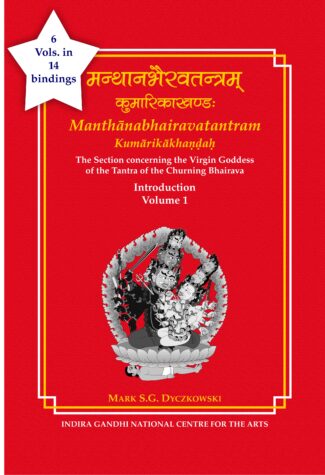
The 24,000 verses long Manthanabhairavatantra is the most important and extensive Tantra dedicated to the goddess Kubjika who is exclusively worshipped in the Kathmandu Valley. The section, Kumarikakhanda, offered here in 14 volumes, presents Kubjikas unique historical importance in the extraordinary richness of the inner, spiritual dimensions of her cult.
The Manthanabhairavatantra is about 24,000 verses long and is divided into three sections (khanda). The one edited and translated here is the Kumarikakhanda. Along with the Kubjikamata, the Manthanabhairavatantra is the most important and extensive Tantra dedicated to the worship of the goddess Kubjika. Although originally an Indian goddess, Kubjika is almost exclusively worshipped in the Kathmandu Valley, where her cult has been kept scrupulously secret by Newar initiates for centuries. Almost all the manuscripts of her Tantras and related literature have been found there.
Kubjika is a powerful development of Malini, the principal goddess of the Trika Tantras and Kali of the Kashmiri Krama tradition. Her cult belongs to a chain of early Kaula systems that culminate with that of the goddess Tripura and so sheds considerable light on them. Kubjikas unique historical importance is mirrored in the extraordinary richness of the inner, spiritual dimensions of her cult. These are explored in detail in the introduction to the edition and translation of the text with extensive references from mostly unpublished Kubjika Tantras and those of related schools.
The work took close to two decades to produce. In this time numerous working editions of unpublished Tantras and related texts were prepared by the author with the help of a team of five trained assistants.
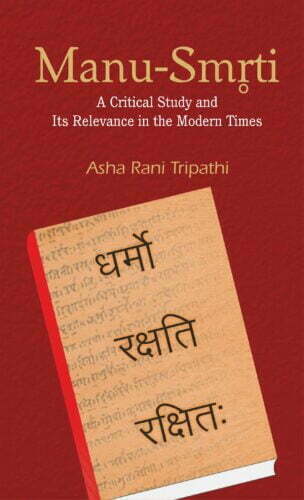
The present book is an effort to bring together all scattered materials related to different topics contained in Manu-Smriti. The book also aims to diffuse many of the doubts related to certain topics contained in Manu-Smriti, such as status of brahmana, shudra and woman.
Manu-Smriti is one of the most coveted and popular works of ancient India. It comprises codes that are needed for an ideal, peaceful and harmonious society. The entire Manu-Smriti revolves around the Vedic concept of rita or dharma. The concepts of purusharthas, ashramas and varnas have their roots in dharma. These concepts were meant to make the life of every member of the society fruitful and purposeful. The codes prescribed by Manu became an authority on ancient laws and were put in practice. The scholars working in different fields of sociology, religion, philosophy, ethics, ancient laws and politics are bound to consult Manu-Smriti for some reason or the other.
The present book is an effort to bring together all scattered materials related to different topics contained in Manu-Smriti. The book also aims to diffuse many of the doubts related to certain topics contained in Manu-Smriti, for example, status of brahmana, shudra and woman. The analysis of topics such as human values, raja-dharma and Manus codes on crime and punishment has been presented in this book in a lucid style. All these topics bear great relevance even in modern times. The volume tries to maintain the originality of Manus concepts through rational and honest approach. The book also includes few modern subjects like economics, ecosystem management and biodiversity conservation that have been dealt by Manu in a scientific manner.
This book will benefit all those who want to know about the rules and practices that governed our ancient history, pertaining to all the aspects of human life.
“प्रस्तुत ग्रन्थ प्राचीन भारतीय मूल्य एवं दर्शन शृंखला के द्वितीय भाग है। मनुस्मृति प्राचीन भारतीय धर्मशास्त्र परम्परा का आधारभूत ग्रन्थ है। भारत का प्राचीन धार्मिक इतिहास सामाजिक संरचना, राजनीतिक मान्यताओं इस ग्रन्थ में जो प्रतिनिधिक वर्णन मिलता है।
मनुस्मृति मूल रूप से आध्यात्मिक मान्यता परक ग्रन्थ रहा, जिसमें कालक्रमः से समाज.व्यवस्था, वर्णव्यवस्था एवं अनेकानेक बातें समाहित होती चली गईं। तथापि मनुस्मृति की सर्वोपरिता आर्यवर्त में सहसीरों वर्ष तक निर्विवाद रही। धर्म, कर्म, कर्तव्य, सूतक, प्रायश्चित्त एवं संस्कार आदि के लिए आज भी स्रोत ग्रन्थ के रूप में मनुस्मृति संदर्भ ग्रन्थ है।”

In this critical interpretation of Upanisad the author looks afresh at some puzzling questions like; What is the nature of Brahman, the one Casual Reality? How can a seeker know it? Who can be eligible for its knowledge?
India has millennia-long tradition of spirituality and metaphysical thought. In its worldview, the Absolute/Supreme Reality defies all verbal descriptions though it is visualizable in countless ways. The Upanishads, accordingly, are diverse expressions of the one vision of this very Reality. The Mundaka, however, holds a special place in the writings of the genre: not because of its emphasis on shraddha (belief) often in ones guru, but primarily for its vehement denunciation of the Vedic ritualism. Which perhaps explains why sannyasins (the renunciate monks) treat this Upanishad as a spiritual authority for the way of life they have chosen to live. Here is a brilliant, critical interpretation in contemporary idiom of the Mundaka Upanishad, showing how a seeker can cogitate/meditate upon the Supreme Reality or, in other words, how one can have the transcendental experience of cosmic Consciousness. The book looks afresh at some of the perpetually puzzling questions that Mundaka addresses questions, like for instance: What is the nature of Brahman, the one Casual Reality? How can a seeker know it? Who can be eligible for its knowledge? Offering an indepth, analytical commentary on this time-honoured text, Swami Muni Narayana Prasad presents at once appropriate metaphors, analogies and, these besides, backgrounds to the varying contexts that not only elucidate various philosophical terms and concepts in all their underlying shades of meanings, but also provides rich insights into this Upanishad. Complete with the original Sanskrit text and its Roman transliteration, this work is a must for all keen on discovering the essential meaning of the Upanishadic thought and meditating upon wisdoms ineffable core.

Smrtis, in Indian spiritual lore denote the class of canonical texts that teach traditional laws, civil or religious. Such laws need periodical revision or modification, or even total nullifying and replacement. Narayana Guru took up the challenge to write Narayana Smrti an alternative new text fit for current times when he felt that the two-thousand-years old Manusmrti has became outdated.
Smritis, in Indian spiritual lore, denote the class of canonical texts that teach traditional laws, civil or religious, as against shrutis that reveal the eternal Reality. Such laws, as is to be presumed, need periodical revision or modification, or even total nullifying and replacement. Narayana Guru took up the challenge to write a new Smriti text when he felt that the two-thousand-years old Manusmriti has became outdated for modern times. Narayana Smriti is an alternative new text fit for current times while being fully in conformity with the traditional wisdom, espoused in Indian literature.
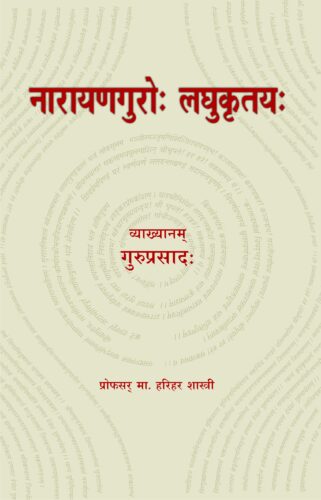
The book written in Sanskrit with original verses, provides details of shorter works of Narayana Guru, a great poet of southern India. Comprising 17 chapters, it highlights his anthologies in praise of Lords Ganapati, Subrahmanya, Siva, Visnu, etc.
The book written in Sanskrit with original verses, provides details of shorter works of Narayana Guru, a great poet of southern India. Comprising 17 chapters, it highlights his anthologies in praise of Lords Ganapati, Subrahmanya, Siva, Visnu, etc.
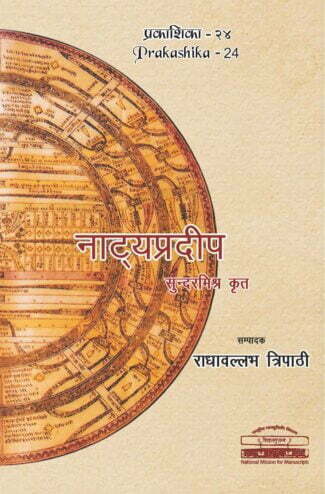
Natyapradipa covers all the topics of dramaturgy and with an all-encompassing range and inclusivity evinces a sound understanding of the structure of Sanskrit drama. It offers novel interpretations on a number of aspects of drama. Natyapradipa is one of the richest storehouses of references to several Sanskrit plays.
The experiences and knowledge from our past are recorded in manuscripts which have been handed down to us over several thousand years. The Government of India, through the Department of Culture, took note of the importance of the vast tangible heritage and, in order to preserve and conserve as well as to make access to this wealth easy, established the National Mission for Manuscripts. In order to disseminate the knowledge content of manuscripts, the Mission has taken up several programmes such as lectures, seminars and workshops. The Mission has published the proceedings of the above-said programmes under the following series: Samrakshika (on conservation), Tattvabodha (comprises lectures based on some manuscripts delivered by eminent scholars), Samiksika (research-oriented papers as presented in the seminars), and Kritibodha (transcribed and edited text prepared at advance level manuscriptology workshops conducted by the NMM.
The National Mission for Manuscripts has taken up a project for publishing rare and unpublished manuscripts in three formats (a) Facsimile, (b) Critical edition (illustrated and single copy manuscript), and (c) Critical edition with annotation and translation. This new series has been named as Prakashika. Natyapradipa critically edited by Prof. Radhavallabh Tripathi comes under this Prakashika series.
Natyapradipa is an unpublished and original work on the principles of dramaturgy. The author Sundaramishra flourished during the sixteenth-seventeenth century. Besides Natyapradipa, he had also written a play Abhiramamani on Ramayana theme.
The unique quality of Natyapradipa lies in its comprehensive nature, it covers all the topics of dramaturgy and with an all- encompassing range and inclusivity evinces a sound understanding of the structure of Sanskrit drama. Sundaramishra offers novel interpretations on a number of aspects of drama. He has made a unique proposition through his theory of joint-dominance of two rasas in a play. He has also attempted a brilliant analysis of the pervasiveness of bindu (the point amongst the natures of the plot) with respect to all the joints and acts of a play. He frankly and reasonably criticizes such stalwarts like Dhanika and Raghavabhatta. His contribution to Sanskrit dramaturgy also lies in applying the whole theoretical framework of dramaturgy to several classical Sanskrit plays and his own play Abhiramamani.
Natyapradipa is one of the richest storehouses of references to several Sanskrit plays and with the publication of this work, Sundaramishra joins the galaxy of great stalwarts in the field of the art of drama and theatre.

This book talks about the divergent views on Natyasastra Þ its origin, concepts, philosophy, history, vritti, impact on traditional stages, relevance in modern age and stage, and its applicability in post-modern stage. It interlinks Natyasastra and the regional theatre forms with specific focus on south India.
Natyasastra of Bharatamuni, considered as the fifth Veda, has remained a Samhita with a systematic presentation of conceptual frameworks, theories and practices of Indian theatre for a few millennium years. Every performing art of India (dancedrama) has drawn both theoretical and aesthetics values from Bharata and his Natyasastra, giving continuity to a legacy, as it was written to set models and standards for actors, artisans, and the playwrights. Natyasastras discovery in the nineteenth century was a milestone in the world history of aesthetics and theatre. The subsequent researches made Bharata and his theatre a vibrant topic of global dialogue and researches. This has resulted in the discovery of different versions of the Natyasastra.
This volume discusses in detail the divergent views on Natyasastra its origin, concepts, philosophy, history, vrtti, impact on traditional stages, relevance in modern age and stage, and its applicability in post-modern stage. It also vividly talks about the interlinks between Natyasastra and the regional theatre forms with specific focus on south India. It therefore reinstates the fact that the regional theatric traditions have considerably contributed to the restructuring of Natyasastra texts.
With deliberations on varied topics, this book proudly announces that Natyasastra is not just a text, but a tradition of theatre that has remained vibrant till today, reminiscent of Indian world-view. And this makes this volume a must-study for ßwho is whoû in the theatric domain.
| There are no products |